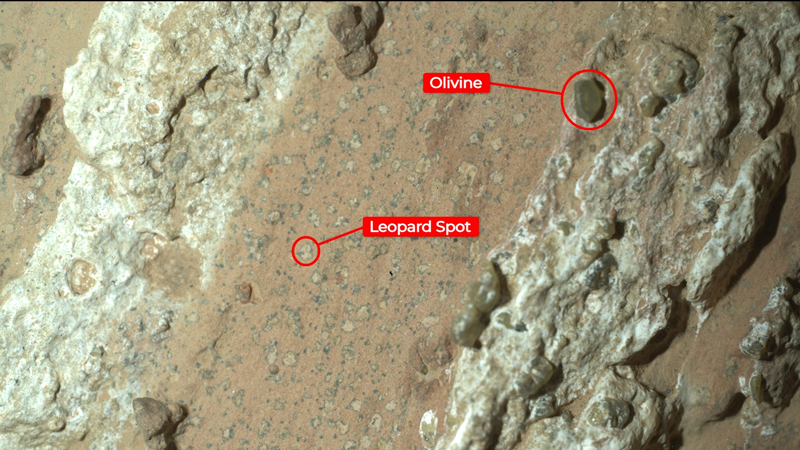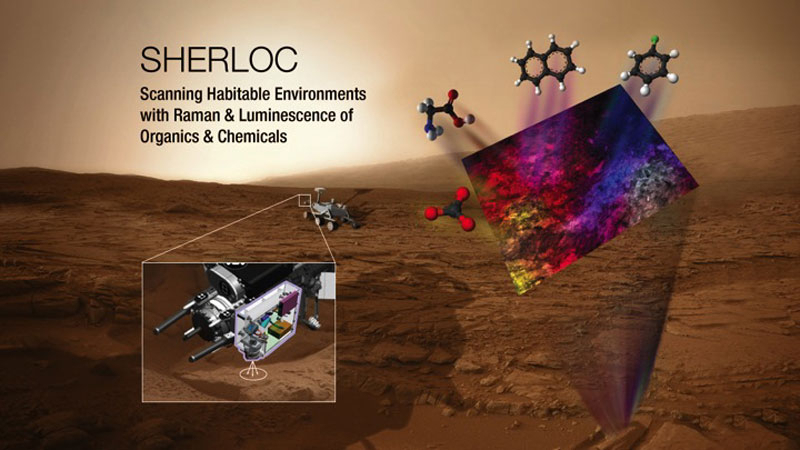NASA’s Perseverance rover team has reported an intriguing discovery on the Red Planet. A six-wheeled geologist traveling on Mars found an interesting stone on its surface, its color reminiscent of a leopard. On Earth, similar traces on rock are left by microbes. This is not yet solid evidence of the existence of biological life on ancient Mars, but a possible hint of it and a promising direction for search.

Image source: NASA
The arrowhead-shaped rock, dubbed Cheyava Falls, showed the characteristic veining and edging patterns associated with microbial life on Earth. The veins are deposits of calcium sulfate, which indicate the presence of running water in this place millions of years ago. Dozens of millimeter-sized spots discovered there represent areas containing iron and phosphates – signs of microbial life on Earth and, probably, similar biological activity on Mars.
The rover took a core from an intriguing rock in the form of sample 22, but whether these samples will ever be delivered to Earth is a sore point for NASA today. The good news is that a team of NASA engineers managed to fix the SHERLOC spectrometer at the end of the rover’s robotic arm. This Raman and luminescence-based instrument can roughly determine the chemical and molecular composition of samples—still better than nothing.

Now the rover is moving along the bed of a former stream in the Jezero crater, where in ancient times, by all indications, there was water. This is an excellent place to look for traces of ancient biological life on Mars, and there are more and more such signs of past living activity (as we understand it) on the Red Planet.